The Old Order Mennonite Population (Horse & Buggy): 38,000+ in The US, Canada & Belize
The Young Center at Elizabethtown College provides annual Amish population numbers, with totals for each state, province and so on. But they also have figures for the Old Order Mennonite population, a group similar to Amish in many ways (and in some cases living next door to them as neighbors). According to their latest tallies, the horse-and-buggy Old Order Mennonites number over 38,000 across their various groups.

Different Old Order Mennonite Groups
Like the Amish, there are diverse groups under the “Old Order Mennonite” label. In the Young Center figures, there are eight separate groups included:
- Old Order Mennonite Church in Canada
- Groffdale Mennonite Conference
- Stauffer Mennonite Church
- Original Virginia Conference, Old Order Mennonites
- Virginia Conference Old Order Mennonites (Riverdale)
- Virginia Conference Old Order Mennonites (Pleasant View)
- Old Order Mennonite Communities (Noah Hoover)
- Reidenbach Mennonite Churches
You’ll find descriptions of each group along with figures for each state or province where they are found at the link above. Most, but not all of the groups show both total population (including non-members) as well as member totals alone (the 38,000+ figure is of total population). Also of note – there is one group which has a presence outside of the US and Canada – the Noah Hoovers, with a settlement in Belize.
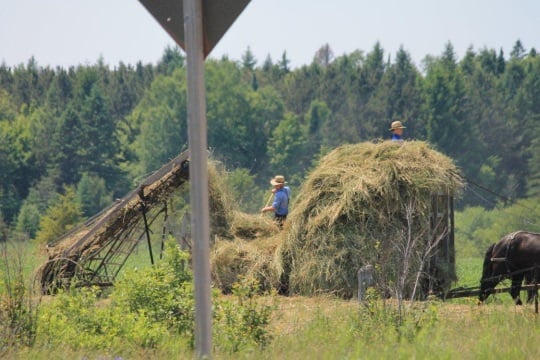
There’s one other caveat here – the numbers are compiled from various sources which have been updated at various times over the past several years. We can call these the 2020 numbers, though that is not exactly accurate. I reached out to Young Center Senior Scholar Steven Nolt, who explains why below – and where the numbers come from:
Unlike our Amish population numbers, which we update every year (generally the summer), in the case of the OOM numbers we just post figures from their directories, which are updated, in most cases, every 5 years on a regular cycle – though each group on a different five year cycle. Thus, each table has a different date. The Stauffer Mennonites, for example, just did a directory (2020) last fall; previously we had 2015 numbers for them. The Groffdale Mennonite figures are for 2017, and we’ll presumably have new numbers in 2022. Etc.
We go through and rather tediously count up people in each directory. I personally did the counting for the Ontario and all the Virginia directories and tables. Edsel Burdge did the Stauffer and Noah Hoover groups. Students helped us with the Groffdale families. An Old Order Mennonite man provided the Reidenbach estimates (they don’t have a printed directory).
Also, Steve explained who is included in these figures:
One might note that some car-driving groups consider themselves Old Order, particularly the Weaverland Mennonite Conference and the Wisler Mennonites of Indiana and Michigan (not the Ohio Wislers, though). But our tables only include horse-and-buggy-driving groups. It’s not that we don’t think the others are Old Order, but we just limited our tabulation project to horse-and-carriage groups.
Steve also notes one small typo – the figures were just updated in January 2021, not 2020 as noted at the bottom of the document. Here is the chart for the Groffdale Conference, aka “Wenger Mennonites”, the largest group:

In comparison to the Old Order Amish, with a population of 350,000+ as of last year, the horse-and-buggy Old Order Mennonites are a much smaller group – around 10-12% the size. View the full numbers at the Young Center Amish Studies site.
Hat tip to Aj. Young Center document compiled by Edsel Burdge, Jr.


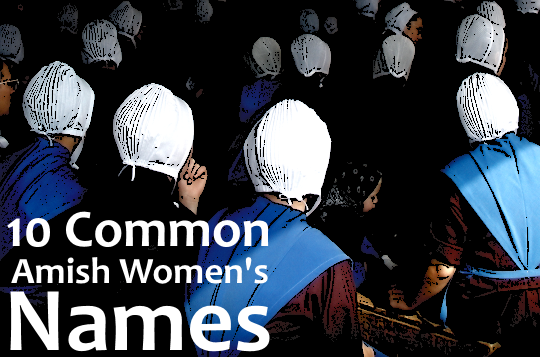
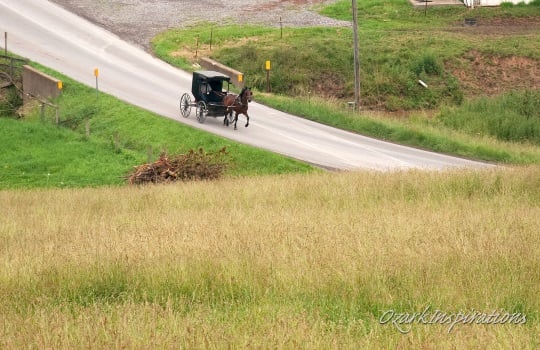
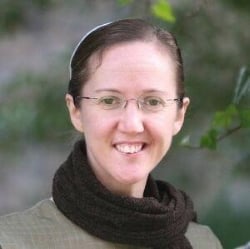
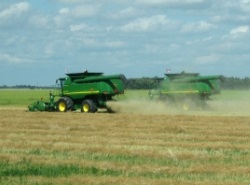


Combination.
On Nickle Mines Road from Gap to Georgetown (PA) there’s a Amish Mennonite church. I didn’t think Amish had buildings and I thought there were different demonations, similar but didn’t mix.
Old Order Mennonites
We live in the heart of an Old Order Mennonite community. They are all lovely people with huge hearts, just like the Amish. But it is interesting how they differ in their Ordnung.
Unlike the Amish, they are not allowed cell phones unless they own a business. Computers are likewise off limits online. They are allowed computers but are not allowed to be online. They can have electricity and phones in their homes. But they are not allowed to have a cordless phone. They are allowed printers and can receive faxes. It’s a complicated operation. You very seldom see their young unmarried people driving horse and buggies. But you sure see them ride their bicycles.
Our neighbor owns a tractor business. He fixes, buys and sells them nationwide. Today he came over (unasked) and opened our 1/2 mile driveway after the big snow storm we had. But he didn’t use the steel wheeled tractor that they have to use on the farm, he used a rubber tired tractor from his stock of tractors. Last year he bought a snow blower for a tractor. I can’t imagine using a snow blower with a steel wheeled tractor. So maybe, like some of the Amish, they work around some things so it’s legal.
Interesting
I would have thought Ohio would have more of this group. In my area of Ohio, we have a large Mennonite population, especially in the Hartville area. I wonder what part of Ohio they are concentrated in, if so.
Looks like Ohio has several other OOM groups, but none that are very big. I have visited one of them, near the Shiloh area. The acquaintance we stopped to see (I was with an Amish friend) operated a huge store. Nice place.
Thanks for sharing this. I have visited Old Order Mennonite communities in Ky., In., Iowa, and Virginia. In some of the settlements I observed very beautiful farmsteads and attended two robust, seemingly very successful produce auctions in the Elma, Iowa and Wakarusa, Indiana settlements. In other settlements, farmsteads appeared to be much plainer. I would think it depends on what specific affiliation the Old Order Menn. the community is part of.
One of the surprising things in these current statistics is the listing of the Old Order Reindenbachs in Kentucky with 3 settlements and 3 congregations with only 10 total members. I wonder when those settlements were started and why they are so small.
That is curious Al. Would average out to 3.3 members per congregation. Wondering if that’s not a typo.
It’s interesting to compare the Mennonite Church USA population with the Old Order Mennonite population. The Mennonite Church USA sect is the most liberal of Mennonite churches. It’s membership has declined by half from 2000 to 2020. From 133,000 to 62,000 today. Old Order Mennonites have doubled in the same period.
Anyone who wants to argue that culture and adherence to a way of life isn’t pivotal to a church’s survival only has to look at the countless Christian denominations that have put all their focus on proselytization rather than raising families. Churches that see their church as a business and not a community with a culture are all in decline. I can’t think of one mainline church which isn’t in decline. And even many churches that aren’t in decline are struggling to keep the next generation saved.
People tend to value things that are hard to join, and have clear rules and standards about membership. Otherwise it is too fluid and easy to float in and out.
It would be interesting to see what becomes of the Amish and Mennonites in more built up areas, such as Lancaster in the next 30-40 years if their population grows at the current rate. Probably, many of them will move, but not all of them. How will settlement patterns change? I think more Amish will move to the southern and northern portions of Lancaster county where the environment is still rural, but those that don’t will probably occupy smaller lots or even altered suburban homes. We might see the suburbanization of the Amish. I think the Amish can survive in those areas where development is a major issue. I look at the Orthodox Jews as an example in Brooklyn. Of course the Orthodox aren’t a farming community, but neither are the Amish who live in developed areas. They also have evolved into a small business community just like Orthodox Jews
I also think a more congested or even city environment itself is adaptable to Amish transportation, because if you look at really congested areas there is always public transportation. In such areas, traffic is always slow moving anyways. The average car in NYC probably drives as slow as a horse and buggy because of all the traffic. Amish may have to leave behind the horse in such places, or they might even be able to adapt the horse and buggy to that environment. I remember reading that in my city, some older folks kept horses in their small backyards and garages up until the early 1960s. Some street peddlers still used horses and carts to sell everything from flowers to hotdogs into the 60s. The change wasn’t because horse and buggies were not able to operate safely in the streets, but because those who used horses and buggies slowly died off. People adapted cars or in most cases adapted public transport, but up until that time those who still used horses in city limits did so without any issue.
Also, if you look at countries like India, Romania, and Egypt… horses, ox, and cows are still used in some cases in some of the most urban areas you will find anywhere in the world. Actually, you don’t need to look at archaic countries like India or Bangladesh. Right here in Baltimore, there are still street vendors called Arabbers who use horses without an issue. https://www.google.com/amp/s/www.capitalgazette.com/bal-making-arabber-stable-a-treasure-of-baltimore-a-jewel-for-maryland-20160507-story,amp.html